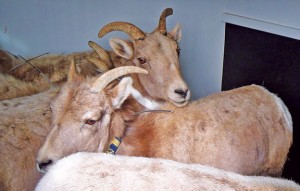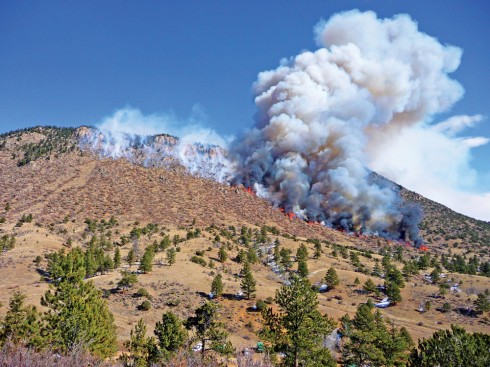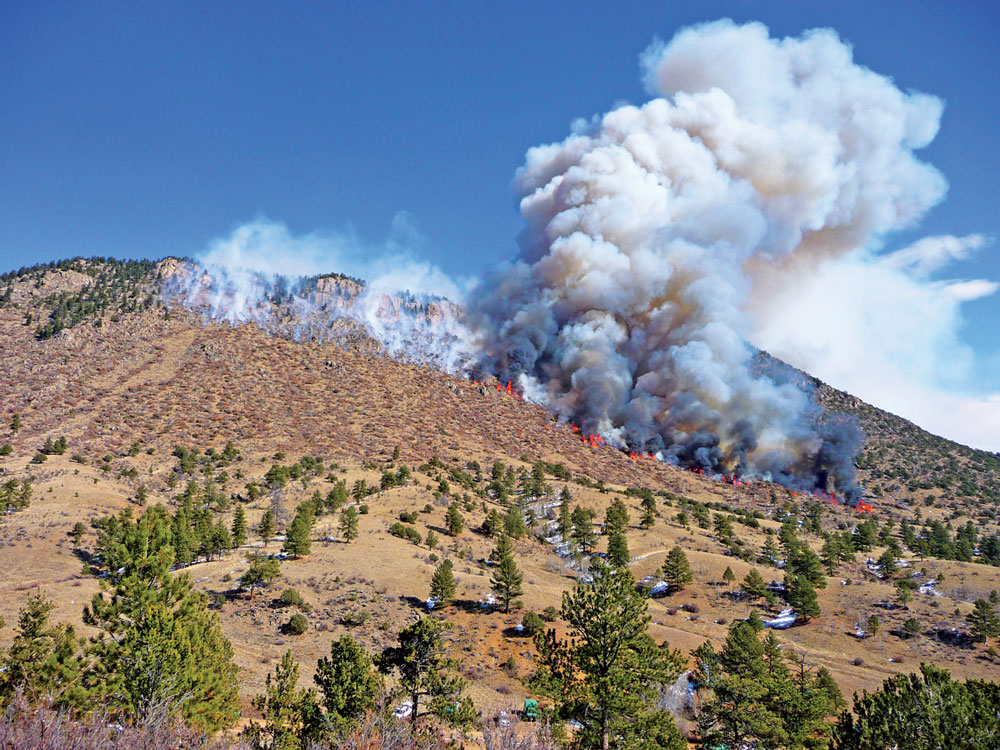By Ron Sering
Limestone Ridge is a prominent feature east of Buena Vista, just west of Chubb Park. The broad hillsides and the steep crags of Limestone Ridge, along with the alpine environment of nearby Buffalo Peaks, once served as ideal habitat for large game animals, including bighorn sheep.
In recent years, however, the state’s official animal has been in short supply in the area. “There is a lot of potential for bighorn habitat,” said Jamin Grigg, a wildlife biologist with Colorado Parks and Wildlife (CPW), “but it has gotten over-forested with not enough forage, and not enough escape cover.”

Years of successful fire suppression have allowed piñon and other scrub vegetation to proliferate, leading to an exodus from the areas by the usual populations of bighorn, elk, and deer.
“We tend to forget that sometimes fire is beneficial,” Mike Wrigley, wildlife biologist with the Salida district of the U.S. Forest Service (USFS), said. The scrub vegetation also restricts visibility for the sheep. “Bighorn like to have clear sight lines,” Wrigley added, “because mountain lions are a major predator.”
Since 2010, Limestone Ridge area has been the focus of a joint project with the USFS, CPW and Department of Corrections (DOC), along with a $10,000 grant from the Rocky Mountain Bighorn Society, to restore a more conducive habitat to the area.
DOC workers began by clearing the scrub vegetation from 140 acres of steep hillside around Limestone Ridge. Once the vegetation was removed, USFS crews staged controlled burns of the slash. In addition to clearing out the unwanted vegetation, controlled burns release nutrients to stimulate the growth of grasses and shrubs. This in turn provides a food source for the returning game species.
Deer and elk quickly moved into the area on their own, but the sheep, which tend to stay in large herds, did not. Rams often range widely in search of food and mates. Ewes, on the other hand, tend to remain close to their usual stomping ground. “Unlike other big game species,” Wrigley said, “bighorn ewes don’t typically travel far from lambing areas.”
In hopes of enticing the rams to expand their territory, Grigg and CPW personnel selected seven ewes, part of an 80-100 member herd near Granite, for relocation.
“The bighorn is a priority species,” Wrigley said, “Colorado Parks and Wildlife always works to restore it to its natural areas.” Shy by nature, and sensitive to encroachment by domestic livestock and land development, the bighorn is classified by the USFS as a “sensitive species,” subject to special efforts to preserve and protect its habitat.
The ewes were darted and tranquilized, then screened for diseases. The finalists were fitted with temporary tracking collars and released into the project area. “We hope to make this the beginning of a subherd of the main herd near Granite,” Grigg said.
But the sheep have minds of their own, and of the original seven, three have made the fifteen-mile trip to return to the main herd. “We knew in advance that some would leave,” Grigg said. Wrigley added, “We are hoping those four will stay on and make their home there. Hopes are that they will attract rams to the area.”

CPW tracks the animals through the radio collars, which will continue to operate for approximately two years, after which they will release and fall off. The CPW also monitors their status through regular over flights; and at last report, the four were still in the area. “They should be lambing, right about now,” Grigg said. “We’ll leave them alone for a while, then check up on them around June or July.”
Future plans call for an additional dozen ewes to be relocated to Limestone Ridge. “We hope this results in a range expansion for the animals,” Grigg said.
Phase two of the joint project, already in progress, is to clear additional acreage in the area, to expand the habitat improvement to nearly 450 acres. “This is a cooperative effort, start to finish,” Wrigley said. “We are thankful for our excellent partners at CPW, RMBS, and the DOC.”




Thank you so much for using free time in order to post “Improving
Bighorn Habitat on Limestone Ridge | Colorado Central Magazine |
Colorado news, stories, essays, history and more!
”. Thanks once again ,Alphonse